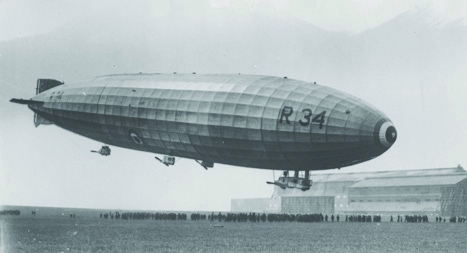
At the beginning of the First World War, Britain commissioned a series of airships for military use. Among these was the R34, spanning the length of two football fields and costing an estimated £350,000.
By the time the Clyde-built R34 was complete, however, the war had ended and the Admiralty instead agreed to lend her to the Air Ministry for air-travel experiments. In July 1919, she became the first airship to make a return journey across the Atlantic in a feat described by The Engineer as a ’triumph for British aeronautics’.
The journey was made under the command of Major GH Scott and from the East Fortune Aerodrome at 1.48am on 2 July. Hours into the flight, the first incident took place when it was discovered that a stowaway had crept on board and hidden between the girders and the gas bags inside the hull.
Despite the initial setback, the article said: ’Nothing worse occurred than the cracking of a cylinder water jacket, which was repaired with a piece of copper sheeting and chewing gum.’ The R34 arrived over Newfoundland at about 2pm on 4 July and later travelled to Mineola, Long Island, where it landed on 6 July.
The article continued: ’Although the petrol carried amounted at the outset to 4,900 gallons – nearly 16 tons – the fuel supply began at that period to give some grounds for anxiety. Nevertheless, the journey was continued and in the end, the airship landed at Mineola with a petrol supply sufficient only for 40 minutes further flight.’
The total time occupied on the outbound journey, was 108 hours and 12 minutes. On her return to England, one of the five engines was put out of action due to a broken connecting rod. The airship continued flying and safely reached Pulham Aerodrome in Norfolk on 13 July.




Project to investigate hybrid approach to titanium manufacturing
What is this a hybrid of? Superplastic forming tends to be performed slowly as otherwise the behaviour is the hot creep that typifies hot...